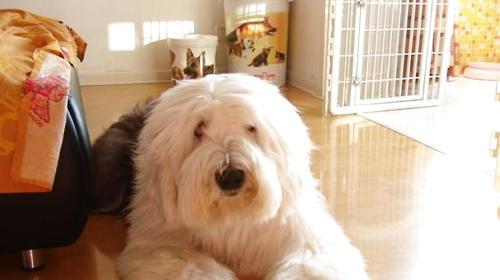
Dog Dog Breathing Examination
Normally, dogs' breathing rhythm is relatively uniform. Generally, in addition to just finishing strenuous exercise, or diseases that make the breathing heavy and the frequency are chaotic, the dog's breathing is more natural and regular. When the dog's breathing frequency suddenly changes or uneven, it is best to pay more attention.
Breathing Type: During the check of the dog's breathing process, pay attention to the coordination and strength of its thorax and abdominal wall undulating movements. When inhaling, the thoracic and abdominal walls are opened, and the thorax and abdominal wall are contracted during breath. This breathing form is called chest and abdominal breathing or mixed breathing. During breathing, the thoracic exercise is dominant, called chest breathing, and healthy dogs are the breathing. If the abdominal wall exercise is dominant, it is called abdominal breathing, which is common in related diseases such as pleurisy, rib fracture, intercostal muscleitis, pericarditis or emphysema.
Breathing rhythm: Healthy dogs will immediately exhale after inhaling, and then there will be a very short interval, and then inhale. This is normal and rhythmic breathing. The changes in respiratory rhythm generally have the following:
1. Extension of aspiration: The feature is the significant extension of the inhalation time. This is because the air enters the lung disorders and is common in the upper respiratory tract stenosis.
2. Extension of exhalation: The feature is that the time of exhalation is significantly prolonged. This is caused by hindering the excretion of the lungs, and the exhalation movement cannot be proceeded smoothly. It is mainly found in fine -telbena inflammation and chronic alveolar swelling.
3. Disposable breathing: Also known as intermittent breathing, that is, when inhaling or exhaling, a continuous action is divided into two or more In order to relieve chest pain, the diseased animals divide the inhalation into multiple times, or it can not exhaust the lung gas from one time. Combination of thoracic diseases with pain, chronic alveolar, chronic alveolar gas, and pleurisy.
4. Chen Shi's breathing: The characteristics are short breathing and abnormal rhythm. Breathing began to strengthen, deepen, and accelerate, and then gradually weakened, and repeatedly occurred after a brief rest. This is caused by severe hypoxia in the respiratory center. Common heart rate, encephalitis, uremia, poisoning, and so on.
